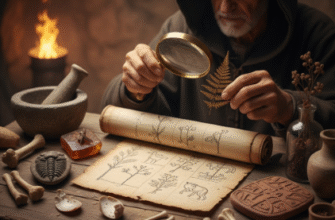Pull up a chair, grab some snacks, and get ready to roll the dice – or maybe move a pawn. Board games are a staple of rainy days, family gatherings, and friendly competitions. We often take their familiar rules and themes for granted, assuming they’ve always been the way they are now. But peel back the colourful cardboard and plastic pieces, and you’ll find that many of our most cherished tabletop experiences have histories far more ancient, complex, and frankly, surprising than you might imagine. Their journeys through time and across cultures have twisted them into the forms we recognize today, often obscuring their original purpose or design.
The Royal Game’s Long Shadow: Chess
Often hailed as the ultimate game of strategy and intellect, Chess feels distinctly European, perhaps medieval, in its aesthetic. Knights, bishops, kings, and queens battling it out on an 8×8 grid seems perfectly suited to tales of courtly intrigue. Yet, the origins of this iconic game lie further east and further back in time. Most historians trace Chess back to a game called Chaturanga, which emerged in India around the 6th century AD. The name itself translates to “four divisions,” representing the four branches of the ancient Indian army: infantry, cavalry, elephants, and chariots.
These pieces roughly correspond to the modern Pawn, Knight, Bishop, and Rook, respectively. Even the objective was similar – checkmating the opponent’s Raja (King). As Chaturanga travelled westward through Persia, it transformed into Shatranj. The Persians adapted the names and some rules. The Raja became the Shah (hence “Shah Mat” or Checkmate – “the King is helpless”). The counsellor piece, Mantri, became the Farzin.
When the game reached the Arab world and subsequently Southern Europe around the 10th century, it underwent further evolution. The powerful Queen piece we know today didn’t exist in early forms; the Farzin was a much weaker piece, moving only one square diagonally. It wasn’t until the 15th century in Europe that the Queen gained her formidable ability to move any number of squares horizontally, vertically, or diagonally, dramatically changing the game’s pace and strategy. The Bishop, too, evolved from the elephant (Alfil), which originally jumped two squares diagonally. So, the Chess we play today is the result of centuries of gradual refinement and cultural exchange, a far cry from its ancient Indian military simulation roots.
Older Than You Think: Checkers (Draughts)
Simple, elegant, and deceptively strategic – Checkers (or Draughts, depending on where you are) seems like a straightforward contest. Jump your opponent’s pieces, get yours to the other side, and crown them as Kings. It feels almost like a ‘beginner’s Chess’. However, its lineage might be even older than Chess. Archaeologists have unearthed game boards bearing a striking resemblance to a Checkers setup dating back to Ur in ancient Mesopotamia, around 3000 BC. A game called Alquerque, found in ancient Egypt and popular around 1400 BC, used a 5×5 grid where players moved pieces across intersecting lines, capturing by jumping – sound familiar?
Alquerque likely spread across the Mediterranean and into Europe. Around the 12th century in the South of France, someone had the clever idea of playing Alquerque using the 8×8 board already popularised by Chess. This hybrid game, initially called ‘Fierges’, became the direct ancestor of modern Checkers. Different countries developed slight rule variations – compulsory jumping, flying kings, pieces only moving forward – leading to the different national versions we see today, like English Draughts versus International Draughts played on a 10×10 board.
Tracing the exact lineage of very ancient games is challenging, as rules weren’t always formally written down. However, archaeological evidence and historical texts clearly show games involving grids, capturing by jumping, and promotion mechanics existing for millennia. These core concepts were adapted and refined across different cultures, eventually leading to familiar games like Checkers.
So, while it might seem like a simple pastime, Checkers rests on millennia of game evolution, a testament to the enduring appeal of abstract strategy played out on a grid.
Luck and Strategy Entwined: Backgammon
Backgammon, with its distinctive pointed board, checkers, and dice, seamlessly blends luck and skill. Its roots dig deep into the ancient Near East. While direct lineage is debated, games bearing similarities were played thousands of years ago. The Royal Game of Ur, played in Mesopotamia over 4,500 years ago, involved racing pieces across a board based on dice rolls, sharing some conceptual similarities. A more direct ancestor is likely the Roman game Ludus Duodecim Scriptorum (“Game of Twelve Lines”), which used three dice and involved moving pieces across three rows of twelve points.
This game evolved into Tabula, which became incredibly popular among Roman legionaries and spread throughout the empire. Tabula boards have been found scratched into stone all over Roman territories. Key elements of modern Backgammon were present in Tabula, including the goal of bearing all pieces off the board and the use of dice to determine movement. The game persisted through the Byzantine Empire and spread through Arab lands, where it was known as ‘Nard’. It eventually reached Europe, gaining popularity in medieval England and France. The name “Backgammon” itself likely emerged in the 17th century, possibly derived from Middle English words “baec” (back) and “gamen” (game), referring to the ability of pieces to be sent back to the start. The doubling cube, a crucial element for high-stakes play today, was a much later invention, introduced in New York City in the 1920s.
The Anti-Capitalist Game That Became… Monopoly
This is perhaps the most famous and ironic origin story in board gaming history. Ask anyone the goal of Monopoly, and they’ll say it’s to amass property, bankrupt your opponents, and become a ruthless real estate tycoon. It feels like the ultimate celebration of capitalism. Believe it or not, its original intent was the exact opposite.
In 1903, a progressive woman named Elizabeth Magie patented a game called The Landlord’s Game. Magie was a follower of Henry George, an economist who believed in a single land value tax to curb unfair wealth accumulation from land speculation. She designed her game to demonstrate the negative consequences of land monopolization and to advocate for George’s ideas. The Landlord’s Game actually had two sets of rules: an anti-monopolist set where wealth was shared more equitably when property was acquired, and a monopolist set where the goal was to crush opponents – designed explicitly to show how unfair the latter system was.
The game spread informally through word-of-mouth, particularly among Quakers and academics on the East Coast. People made their own homemade versions, often adapting the street names to their local areas (like Atlantic City, New Jersey). It was one of these homemade versions that Charles Darrow encountered in the early 1930s. Darrow refined the rules (focusing entirely on the monopolist aspect), prettied up the design, and claimed it as his own invention.
Parker Brothers Steps In
Darrow sold his version, now called Monopoly, to Parker Brothers in 1935. The game was a massive success, especially during the Great Depression, offering an escape and a fantasy of wealth. Parker Brothers later learned about Magie’s original patent and bought it from her for a mere $500, securing their rights and largely burying the game’s true, critical origins. It’s a fascinating twist: a game designed to critique unchecked capitalism became its most famous tabletop symbol. Elizabeth Magie’s original purpose was almost entirely lost to history until rediscovered decades later.
From Moral Lessons to Child’s Play: Snakes and Ladders
Sliding down a snake or climbing up a ladder – the simple up-and-down mechanics of Snakes and Ladders are known to children worldwide. It seems like a straightforward race game governed entirely by the luck of the die. But this game, too, has a much deeper and more philosophical past. It originated in ancient India, where it was known as Moksha Patam or Paramapada Sopanam (The Ladder to Salvation).
Moksha Patam wasn’t just entertainment; it was a tool for teaching morality, specifically the Hindu concepts of karma and destiny. The board was often intricately illustrated, with squares representing various virtues and vices. Landing on a square associated with a virtue (like faith, generosity, or knowledge) allowed the player to ascend via a ladder, symbolizing spiritual progress. Conversely, landing on a square representing a vice (like lust, anger, greed, or theft) meant sliding down a snake, signifying a moral setback or rebirth into a lower form. The number of ladders was typically fewer than the number of snakes, illustrating that the path of good is harder than the path of evil. The ultimate goal was to reach square 100, representing Moksha or spiritual liberation.
When the game arrived in Victorian England during the colonial era, its underlying philosophical framework was largely stripped away. The moral lessons were simplified or removed entirely, replaced by generic numbered squares. The focus shifted purely to the race aspect, transforming it into the luck-based children’s game we know today as Snakes and Ladders (or Chutes and Ladders in the US). While still fun, it’s a shadow of its original didactic purpose, showcasing how cultural transmission can alter not just the rules, but the very soul of a game.
These are just a few examples, of course. Many other familiar games, from Ludo (another descendant of an Indian game, Pachisi) to Mahjong, have equally fascinating and winding histories. They remind us that these boxes of cardboard and plastic are more than just diversions; they are cultural artifacts, shaped by history, migration, philosophy, and even political critique. The next time you sit down to play, take a moment to appreciate the centuries, perhaps even millennia, of human history resting there on the table.







